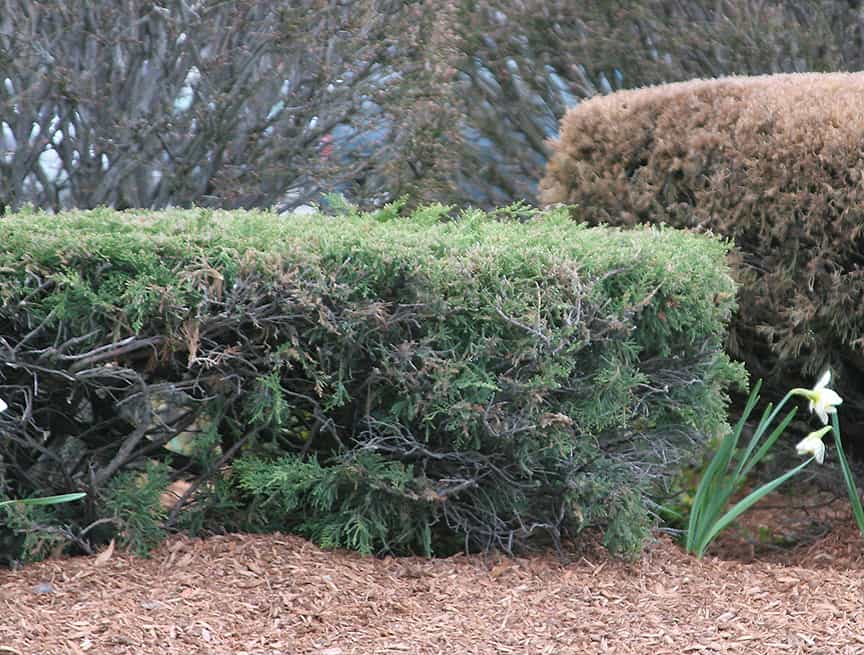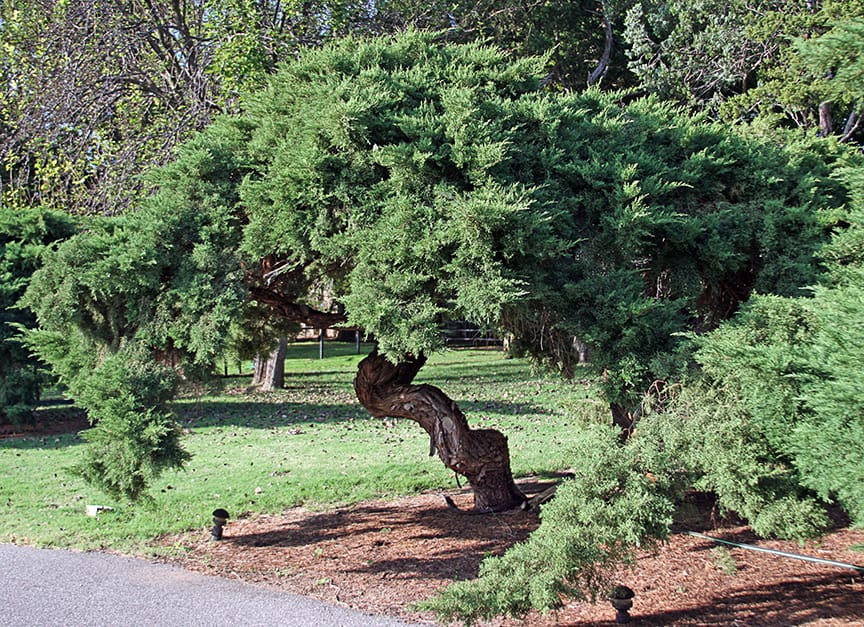The ideal way to prune a spreading juniper is to take off any deadwood and then stop. What makes a juniper attractive are those long, feathery branches. The reality is, however, that many of these plants have been placed in locations that they can’t be allowed to spread forever. Unfortunately, once they start to grow into driveways and over sidewalks, most people start chopping them off. The term “hacking back” comes to mind, and with a juniper it doesn’t usually end well.

These junipers are growing near a drive and the homeowner has started down the slippery slope of hacking them off. Right now they don’t look too bad…the feathery growth is fine on top and the sides haven’t yet gotten bare. In a couple of years this approach will no longer be attractive, however.

These junipers are in a shopping mall parking lot island. Junipers are frequently planted in these spaces since they are heat and drought tolerant. Unfortunately they usually grow too wide for these narrow islands and are sheared into green coffin-shapes. No trace of those feathery branches on this shrub, and repeated shearing makes them get thinner and thinner.
Let me suggest an alternative approach. Early in a spreading juniper’s life, before it grows into that driveway or sidewalk, lift the top layer of branches and cut the older, lower stems back into the plant. The top growth will cover where you’ve cut, maintaining the natural look of the plant.
Once the shrub is even older, however, this stops being effective and those lower, chopped limbs start to become visible. This is the time to start thinking of a spreading juniper as a very large bonsai tree. Begin to arborize such plants by cutting those branches back to the main stem, exposing the trunk. This can create interesting, sculptural forms that maintain their feathery nature and stay away from passageways.

This juniper has been treated like a large bonsai for several years. It is interesting and attractive. In fact, they have these lit at night because they are so lovely.



